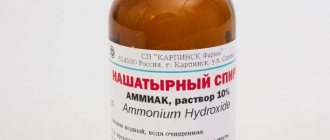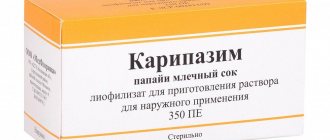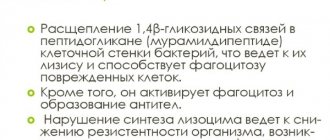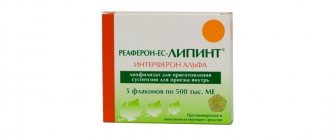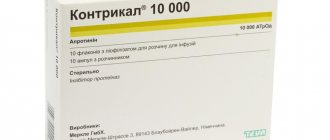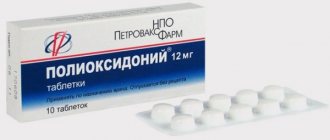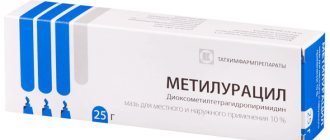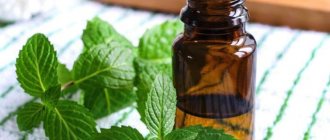Levomycetin (or chloramphenicol) is an antibacterial agent that is widely used systemically or topically to treat infectious diseases. It belongs to the group of amphenicols. In the form of a solution for external use, the drug is used in surgery, therapy and otolaryngology.
A huge advantage of the medicine is its availability, since the price of this antibacterial agent is much lower than other analogues.
However, there are a number of strict indications for its use. Therefore, only a qualified doctor can decide whether this drug can be used for skin wounds, or dripped into the ear for otitis media.
Pharmacological properties
Chloramphenicol is a broad-spectrum antibiotic. It has high antibacterial activity against various forms of purulent-inflammatory processes and pathogens of wound infections.
It disrupts the process of protein synthesis in the microbial cell: due to its good lipophilicity, the ability to penetrate the cell membrane of bacteria and reversibly bind to the substance of 50S bacterial ribosomes, as a result of which the movement to the growing peptide chains of amino acids is delayed and protein synthesis is disrupted.
Shows activity against most strains of gram-positive/gram-negative microorganisms that are resistant to tetracyclines, penicillin and sulfonamides.
Helps cleanse and heal trophic ulcers, burn wounds, and accelerate epithelization.
Side effects when using Levomycetin
When used topically, the most common side effects are allergic reactions of varying severity. They are usually manifested by redness of the skin or the appearance of a rash at the site of application of the drug with severe itching. In this case, swelling of the adjacent tissues is also possible.
The second side effect occurs when using Levomycetin solution to treat bacterial ear diseases. Cases of ototoxicity of the drug have been described, especially in patients who already had symptoms of sensorineural hearing loss.
It is because of this that this drug has been used much less frequently in the last decade. Advantage is often given to safer medications for the treatment of acute otitis media.
Contraindications
Absolute:
- skin diseases, including psoriasis, eczema, fungal infections;
- intermittent porphyria in acute course;
- inhibition of bone marrow hematopoiesis;
- liver/renal failure;
- deficiency of glucose-6-phosphate dehydrogenase;
- neonatal period (up to 4 weeks);
- individual intolerance to any component of the drug.
Relative (Levomycetin alcohol solution is prescribed under medical supervision):
- previous radiation therapy or treatment with cytotoxic drugs;
- early childhood;
- pregnancy.
Indications for use of Levomycetin
Levomycetin is most widely used in surgery. Its alcohol solution is prescribed in outpatient and inpatient settings for the treatment of wounds, in order to prevent or treat secondary bacterial inflammation. The medication is also applied to superficial or deep burns (thermal or chemical) during the tissue healing phase.
Levomycetin is also used to prevent the development of surgical complications of diabetes mellitus, for trophic ulcers on the feet or legs, furunculosis and bedsores in patients after injuries or cerebrovascular accident. In such cases, the drug promotes faster healing, epithelization and restoration of the skin.
An alcohol solution of Levomycetin is also used in otolaryngology. Its main indication here is acute purulent otitis media or external otitis.
Use for otitis media
Inflammatory diseases of the hearing organs are a common problem in children and adults. In most cases, the pathological process is localized in the middle ear and develops against the background of respiratory infections. Otitis is accompanied by pain and a feeling of congestion, an increase in temperature to 37.5-39.0 ° C, general weakness and intoxication of the body. Sometimes the disease is accompanied by the discharge of pus or exudate from the ear canal.
Most often, the pathology is caused by staphylococci (more than 90% of cases). Antibiotics in the form of ear drops for children and adults are prescribed in the following cases:
- purulent form of the disease;
- catarrhal otitis media in infants under one year of age;
- bilateral damage to the hearing organs;
- the presence of accompanying pathologies;
- abscess (otitis externa);
- prevention of otitis due to injury or surgery on the middle ear.
Important! Antibiotics for the treatment of otitis are prescribed by a doctor based on the results of bacterial culture of ear discharge for resistance to various groups of drugs. Uncontrolled use of medications is unacceptable.
Let's consider how to use chloramphenicol alcohol for otitis, and whether it is possible to drip "Levomycetin" eye drops into the ear.
Symptoms of otitis media are very painful and require immediate treatment
Alcohol solution
It is recommended to use ear drops based on an alcohol solution of chloramphenicol in the treatment of otitis media in acute catarrhal form, as well as external abscess in adult patients and adolescents.
Important! Before instilling chloramphenicol into the ears, you must make sure that there is no perforation of the eardrum. Ethanol, penetrating through damaged areas of tissue, negatively affects the auditory nerve, which can lead to hearing loss, even complete deafness.
Levomycetin for ears is used in the form of an alcohol solution at a dosage of 0.25%. More concentrated preparations must be diluted in the required proportion with boiled or distilled water for injection. Chloramphenicol alcohol should be instilled into the ear in accordance with the recommendations of therapists:
Levomycetin for treating ears should be used very carefully
- Bring the temperature of the solution to 36.0-37.0 °C by holding the bottle in your hands for several minutes or heating it in a water bath.
- Clean the auricle and outer part of the ear canal from wax and secretions using a cotton swab or swab moistened with warm water. It is forbidden to use sharp objects and insert the stick into the ear deeper than 0.5 cm.
- Prepare, thoroughly rinse and dry the glass pipette in advance.
- Take a small amount of liquid and drop 2-3 drops into the sore ear, being careful not to let the medicine get on the walls of the ear canal. The tip of the pipette should not be inserted to a depth of more than 0.5 cm. During the procedure, the patient should lie on his healthy side, with his head slightly tilted down. To facilitate the introduction of the solution, it is recommended to slightly pull the earlobe back and up.
- After administering the antibiotic, the patient must remain in a horizontal position for 15-20 minutes for the drug to work effectively. If necessary, repeat the procedure for the other ear. To prevent fluid from leaking, you can temporarily close the ear canal with a cotton swab.
Chatterbox Recipes
If acne appears due to hormonal changes in the body, then experts recommend using special mixtures based on chloramphenicol alcohol - mash. Such remedies are easy to prepare at home. The ingredients for making chatterboxes can be purchased at any pharmacy.
To make a useful mixture, three substances are needed: an antibiotic, a solvent and an antiseptic. All components are mixed and shaken in a certain ratio, and the resulting composition is used externally.
Popular recipes for pimples for acne:
- You need to take two Trichopolum tablets and crush them. The resulting powder is poured into a bottle of chloramphenicol and shaken thoroughly until it has a homogeneous consistency. The mash is applied to the rash using the spot method. Before each use, the container with the medicinal product must be shaken.
- The second recipe for mash includes boric and salicylic acid, Levomycetin alcohol and calendula tincture, which must be taken in equal proportions. The components are mixed, and the rashes are treated with the finished composition. The product should be applied pointwise. This chatter helps in the fight against small pimples.
- To prepare the mixture, take chloramphenicol, Metronidazole, boric and salicylic acid in equal proportions. Metronidazole tablets are crushed and combined with solutions. The mixture must be shaken before applying to the skin. It is recommended to use the chatterbox at night. This remedy helps get rid of numerous rashes.
After using the talkers, the skin should be lubricated with a moisturizing and softening cream, since they dry out the skin greatly. Therapeutic mixtures are effective in the fight against acne, boils and age spots, but it is better to use such products on the recommendation of a specialist.
Directions for use and dosage
The tablets are taken orally half an hour before meals 3-4 times a day. If nausea and vomiting develop, the tablets are recommended to be taken 1 hour after eating.
Dosage regimen:
- Adults: single dose – 250-500 mg; daily – 2000 mg. In severe forms of infections, in a hospital setting, the daily dose may be increased to 3000-4000 mg;
- Children: daily dose under the control of drug concentration in blood serum - 12.5 mg per 1 kg of body weight (base) every 6 hours or 25 mg per 1 kg of body weight (base) every 12 hours. For severe infections, daily dose can be increased to 75-100 mg per 1 kg of body weight.
The duration of therapy with Levomycetin is on average 8-10 days.
Eye drops are instilled into the conjunctival sac, 1 pc. 3-4 times a day. Patients using the drug at their own discretion are not recommended to use it for more than 3 days without consulting a doctor.
The solution is applied externally several times a day, treating damaged areas of the skin with a cotton swab dipped in it.
Description and composition of the drug
Acne that occurs on the skin is often treated with external methods. Levomycetin solution copes well with this task. The product belongs to the group of external antibacterial drugs.
The transparent alcohol solution is characterized by a light yellow tint and a characteristic odor. The product is produced in glass bottles of 25, 30, 40 or 50 ml. Each container is packed in a cardboard box. The active substance of the drug is chloramphenicol. 70% ethyl alcohol is used as an additional component.
Levomycetin solution is sold in pharmacies without a prescription from a specialist. Anyone can purchase a cheap drug. The cost of the product depends on the volume of the container and varies between 40-70 rubles. The solution should be stored in a dark and dry room at a temperature no higher than +26 degrees. The shelf life of the medicine is 1 year. After this time, the product cannot be used.
Children and pets should not have access to the drug.
If necessary, the antibiotic can be replaced with chloramphenicol alcohol. These drugs have the same therapeutic effect. Other analogues of the drug for topical use are Albucid, Normax, Oftalmoferon, Floxal and salicylic acid. Levomycetin solution should not be replaced with another drug if prescribed by a doctor. Other drugs can cause negative consequences because they contain different components.
Prevention measures
To prevent otitis media, as well as to prevent its recurrence, a number of recommendations should be followed, including:
- Timely consultation with a doctor at the first signs of developing otitis media.
- Treatment of inflammatory foci in other organs of the ENT system.
- Regular preventive visits to the otolaryngologist.
- Maintaining hygiene of the auditory cavity.
- Maintaining a healthy lifestyle, including giving up bad habits, playing sports and strengthening the immune system.
- Moderate physical activity.
- Taking vitamin preparations.
This is a fairly simple list of recommendations, the implementation of which will help prevent the development of otitis media.
Buy Levomycetin solution 3% 25ml in pharmacies
Instructions for use Levomycetin Dosage forms alcohol solution 3% 25 ml Group Antibiotics of the chloramphenicol group International nonproprietary name Chloramphenicol Composition Active substance - Chloramphenicol. Manufacturers: Borisov Medical Preparations Plant (Belarus), Vologda Pharmaceutical Factory (Russia), Ivanovo Pharmaceutical Factory (Russia), Kazan Pharmaceutical Factory (Russia), Kaliningrad Pharmaceutical Factory (Russia), Krasnodar Pharmaceutical Factory (Russia), Omsk Pharmaceutical Factory (Russia), Permfarmatsiya (Russia), Pharmaceutical Factory St. Petersburg (Russia), Fitofarm-NN (Russia), Yaroslavl Pharmaceutical Factory (Russia) Pharmacological action Antimicrobial, antibacterial. When taken orally, it is quickly absorbed into the gastrointestinal tract, the maximum concentration in the blood plasma is reached after 2-3 hours. Penetrates into organs and body fluids, passes through the blood-brain barrier and placental barrier, and is found in breast milk. The main amount undergoes biotransformation in the liver. It is excreted mainly by the kidneys, partly by bile and feces. Effective against many gram-positive cocci (staphylococci, streptococci, pneumococci, etc.), gram-negative cocci (gonococci, meningococci), Escherichia coli and Haemophilus influenzae, Salmonella, Shigella, Klebsiella, Serration, Yersinia, Proteus, anaerobes, rickettsia, spirochetes, some major viruses. Acts on strains tolerant to penicillin, streptomycin, sulfonamides. Weakly active against acid-fast bacteria, Pseudomonas aeruginosa, clostridia and protozoa. Due to serious side effects, it is used when other chemotherapy drugs are ineffective. Side effects Nausea, vomiting, loose stools, irritation of the mucous membranes of the mouth, pharynx, leukopenia, thrombocytopenia, reticulocytopenia, hypohemoglobinemia, agranulocytosis, anemia, psychomotor disorders, disturbances of consciousness, delirium, visual and auditory hallucinations, paralysis of the eyeballs, taste disturbances, decreased acuity hearing and vision, dysbacteriosis, superinfection, cardiovascular collapse, dermatitis, allergic reactions Indications for use Typhoid fever, typhus, paratyphoid fever, brucellosis, rickettsiosis, tularemia, dysentery, whooping cough, chlamydia, meningitis, brain abscess, pneumonia, sepsis, ostomyelitis, purulent-inflammatory skin diseases, purulent wounds, infected burns, cracked nipples, infectious eye diseases. Contraindications Hypersensitivity, diseases of the hematopoietic organs, acute porphyria, severe renal and liver dysfunction, psoriasis, eczema, fungal diseases, pregnancy, lactation, early childhood (first months of life) Method of administration and dosage Used externally as an antiseptic. Overdose Symptoms: nausea, vomiting, diarrhea. An overdose is rarely life-threatening. If a larger dose than prescribed is taken, notify a poison center. Symptoms: hives, rash, severe itching, fainting, facial swelling, numbness or tingling. Interaction Cycloserine increases hematotoxicity. Phenobarbital accelerates biotransformation, reduces the concentration and duration of the effect. Inhibits the metabolism of tolbutamide, chlorpropamide, and oxycoumarin derivatives. Erythromycin, oleandomycin, nystatin, levorin increase antibacterial activity, benzylpenicillin salts decrease it. Incompatible with cytostatics, sulfonamides, pyrazolone derivatives, diphenine, barbiturates, alcohol. Special instructions Chloramphenicol is limited for use in diseases of the cardiovascular system and a tendency to allergic reactions. When taken orally, it is necessary to regularly monitor the peripheral blood picture. Levomycetin should not be prescribed for acute respiratory diseases, sore throat and for prophylactic purposes. Storage conditions List B. Store in a dry place, protected from light, at room temperature, out of the reach of children.
What does the drug consist of?
You can buy chloramphenicol alcohol in the form of a solution with a yellowish tint or without color. When used, there is a smell of medical alcohol. This drug consists of two ingredients - 70 percent ethyl alcohol and chloramphenicol or chloramphenicol.
At the pharmacy kiosk you can buy analogues of this product with the same active ingredients - Levomycetin and Syntomycin ointments, as well as Levomycetin liniment. Let's talk more about the indications for use now.
special instructions
Due to the high toxicity of Levomycetin, it is not recommended to be used unnecessarily for the prevention and treatment of colds, bacterial carriage, pharyngitis, influenza, and common infections.
During therapy, it is necessary to systematically monitor the peripheral blood picture.
As a rule, severe complications from the hematopoietic system are associated with the use of high doses of Levomycetin (more than 4000 mg) for a long period.
For children in the first months of life, the drug should be prescribed only for health reasons. This is because in fetuses and newborns the liver is not developed enough to bind chloramphenicol, and the drug can accumulate in toxic concentrations and lead to the development of gray syndrome.
In cases of simultaneous use of the drug with ethanol, a disulfiram reaction may develop: convulsions, skin hyperemia, nausea, reflex cough, vomiting, tachycardia.
The use of chloramphenicol and boric alcohol for otitis media
Inflammatory processes in the ears, accompanied by pain and malaise, occur in both children and adults. Otitis is the most common disease in childhood. Almost 80% of children experience otitis media by 3 years of age.
It is believed that children are more prone to otitis media, but, according to doctors, more than half of the world's population has encountered this disease at least once.
Many experienced mothers know how to cure an unpleasant illness in a child using home remedies, without resorting to the help of medical specialists. The most popular drugs for the treatment of otitis media are alcohol solutions.
Boric alcohol
Tincture of boric acid with ethyl alcohol has been used for many years to treat ear diseases. Boric alcohol actively destroys bacteria and viruses in the cavity of the diseased ear, and has warming and astringent properties.
When used correctly, boric alcohol will help relieve ear pain at the initial stage of otitis media. But you should not instill undiluted solution into your ears, since boric acid has a toxic effect and can penetrate deeply into the tissues, accumulating in them. It should be used correctly, after consulting with your doctor.
Camphor alcohol
Camphor is a substance obtained from laurel. A 2% alcohol tincture of camphor is used in medicine to treat various skin diseases, as well as when the first symptoms of purulent otitis appear.
Camphor alcohol reduces pain in the ear, relieves swelling, reduces inflammation, and kills bacteria. It is forbidden to instill the drug into the ear in its pure form, since camphor is a strong irritant.
Instructions for using the product
Before purchasing chloramphenicol solution, you should consult your doctor to determine the causes of acne. If a specialist has prescribed this medication, then you should purchase the drug with a concentration of 1% so as not to dry out the skin. Before starting treatment, it is not recommended to wipe your face or body with special products.
Instructions for using an alcohol solution:
- Dip a cotton swab into the chloramphenicol solution and apply the product to acne in a targeted manner.
- For oily skin types, you can use cotton pads, which will make it easier to treat large areas with rashes.
- The drug is applied every 12 hours until the acne completely disappears.
- The effect of the medication can be enhanced by adding essential oils of orange, lemon, fir or tea tree to Levomycetin.
- The product can be used for 8-10 days.
During treatment with Levomycetin solution, you should carefully care for your skin and follow your diet. Fatty foods and flour should be excluded from the diet. You should also reduce your consumption of dairy products and sugar. It is recommended to drink at least 2 liters of water during the day. Boiled and stewed vegetables will help improve the condition of the skin. If you follow these rules, you can get rid of acne and other types of inflammation in just a week.
Drug interactions
The risk of side effects increases with simultaneous use of chloramphenicol with radiation therapy, drugs that inhibit hematopoiesis (cytostatics, sulfonamides) or affect metabolism in the liver.
Chloramphenicol reduces the antibacterial effect of cephalosporins and penicillins; enhances the effect of oral hypoglycemic drugs (by increasing their concentration in plasma and suppressing metabolism in the liver).
When used simultaneously with lincomycin, clindamycin or erythromycin, a mutual weakening of their actions is observed. This is due to the fact that chloramphenicol can interfere with the binding of these drugs to the 50S subunit of bacterial ribosomes or displace them from the bound state.
Due to the fact that chloramphenicol suppresses the cytochrome P450 enzyme system, when it is used in combination with phenytoin, phenobarbital or indirect anticoagulants, a slowdown in excretion, a weakening of metabolism, and an increase in the concentration of these drugs in plasma are observed.
